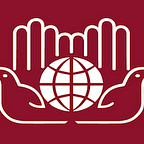The Power of Storytelling for Advocacy — Opinion Piece
At the first ever Design for Humanity Summit last year, Babita Bisht, Chief of Resource Mobilization & Communication at UN CERF discussed the importance that story telling and communication plays in humanitarianism.
Below is the excerpt of Bisht’s contribution to the newly released Design for Humanity Summit Yearbook available for download here.
“Good communication is key to changing attitudes, beliefs and practices. The history of the world is the story of change and transformation as communities and civilizations explore and master new ideas, skills and experience. At the heart of effective communication is good storytelling — capturing people’s attention, bringing issues to life, engaging with people and invoking a palpable sense of connection that transcends our personal experience.
With more than 134 million people in need of urgent humanitarian aid today, telling their stories is vital to effectively advocating for change that can alleviate their suffering, help them survive and protect them as they grapple with the formidable challenges of everyday life.
Some key considerations for good storytelling to help stand out in a crowded global landscape include:
- Telling the story of people in need: with them, for them and by them. The voices of people most affected — in their own words — must be central to the narrative. While focusing on their challenges, stories should also promote their dignity, security, resilience and well-being. Losing loved ones, experiencing horrifying brutalities are deeply personal experiences. Respecting their grief and loss while capturing the testimonies of people to voice their struggles is critical.
- Advocacy Champions: Understanding the audience, especially decision-makers, is also key to effective communication. In a complex, global landscape with multiple actors involved in crisis and post-crises contexts, credible, authentic champions who can speak out with the ability to shape opinions, convene diverse partners and mobilize action are vital to success.
- Compelling and Engaging: Storytelling that combines emotions and acts, human narrative and numbers in compelling ways is key to engage audiences, trigger connections and inspire action. Policymakers respond to a combination of data combined with a creative, human narrative that resonates with the wider public. “Stats Tell; Stories Sell” is an important principle to remember to ‘cut through the clutter’ of multiple messages and commitments that compete for the limited attention of audiences.
- Think ‘Glocal’: Global approach, Local impact. The complexity of issues and range of decision-makers important to make change requires a multi-faceted approach that is general while also targeting the specific interests of different groups of influencers. While global leaders and inter-governmental mechanisms like the UN Security Council are important, local and community leaders are critical to making change on the ground for families/communities in crises.
Humanitarian action is not a one-off effort. It requires persistence, diligence and compassion, in light of the shortfalls of political and/or military approaches. It may be perceived as a ‘band aid’ to more challenging political questions. Advocacy through good communications that consistently leverages all political and public channels and decision-makers, is powered by dynamic and visionary leaders communicating to mobilize partnerships while conveying inspiring human stories of those affected in overcoming the challenges they face.
In short, good storytelling to provoke change in response to humanitarian crises requires consistent communication which engages the head, heart and hands of diverse target audience to promote meaningful action.”
Learn more about the Design for Humanity Summit II, taking place June 21, 2019 at Fordham University’s McNally Amphitheatre here.
About the IOM — UN Migration
Established in 1951, IOM is the leading inter-governmental organization in the fi eld of migration and works closely with governmental, intergovernmental and non-governmental partners. With 173 member states, a further 8 states holding observer status and offices in over 100 countries, IOM is dedicated to promoting humane and orderly migration for the benefit of all. It does so by providing services and advice to governments and migrants. IOM works to help ensure the orderly and humane management of migration, to promote international cooperation on migration issues, to assist in the search for practical solutions to migration problems and to provide humanitarian assistance to migrants in need, including refugees and internally displaced people
About the IIHA
The Institute of International Humanitarian Affairs (IIHA) prepares current and future aid workers with the knowledge and skills needed to respond effectively in times of humanitarian crisis and disaster. Our courses are borne of an interdisciplinary curriculum that combines academic theory with the practical experience of seasoned humanitarian professionals. The IIHA also publishes on a wide range of humanitarian topics and regularly hosts a number of events in the New York area, including the annual Humanitarian Blockchain Summit and Design for Humanity Summit.
For media inquiries please contact:
Camille Giacovas
Communications & Research Officer, IIHA
cgiacovas@fordham.edu
Angela Wells
Public Information Officer for the International Organization for Migration’s Department of Operations and Emergencies
awells@iom.int
